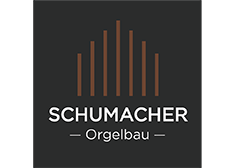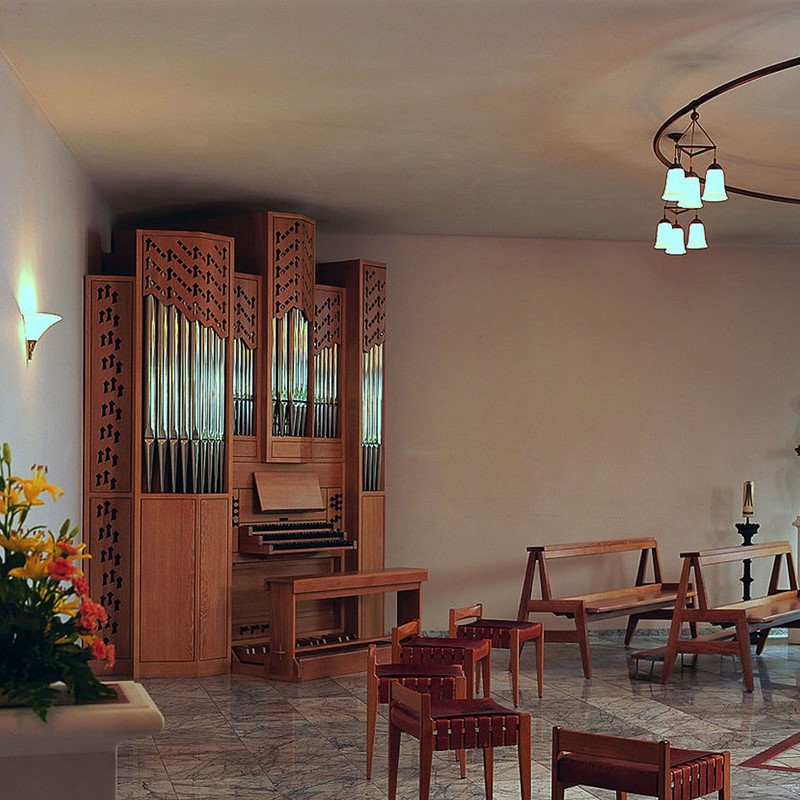Cologne (D) | Seminary
This particularly ornate chapel of the Priests Seminar is small and low. In spite of its size, the instrument had to look very tasteful and above all reserved. So it was decided to place the organ diagonally in the back corner and to design a case organ in steps and side-bending flats. The fact that the corner flats are not lined up but displayed in a broken line-way, the organ seems to be less broad than it really is. The sculptress Beate Peilert has been inspired by the Gregorian chant notation. The warm shade/tone of natural oak matches very well the design of the chapel.
The type of specification is mainly aiming at playing early music; however, the combination of Salicional 8' with other stops allows fine dynamic sound gradations (or shades) for the liturgical accompaniment.
The third manual is conceived as so-called Hilfsmanual and has the same specification (or stops) as the Great. So this gives the students the opportunity to study the organ literature in its several aspects.
Stop list
Hauptwerk I
Gedeckt 8'
Prinzipal 8' c°
Prinzipal 4'
Oktave 2'
Quinte 1 ⅓'
Positiv / Hauptwerk
Positiv II
Gedeckt 8'
Salicional 8' c°
Rohrflöte 4'
Nasat 2 ⅔'
Disk. g°
Terz 1 ⅗' Disk. g°
Krummhorn 8'
Hilfsmanual III
Gedeckt 8'
Prinzipal 8' c°
Principal 4'
Oktave 2'
Quinte 1 ⅓'
Pedal
Subbass 16'
Holzflöte 8'
Hauptwerk / Pedal
Positiv / Pedal

